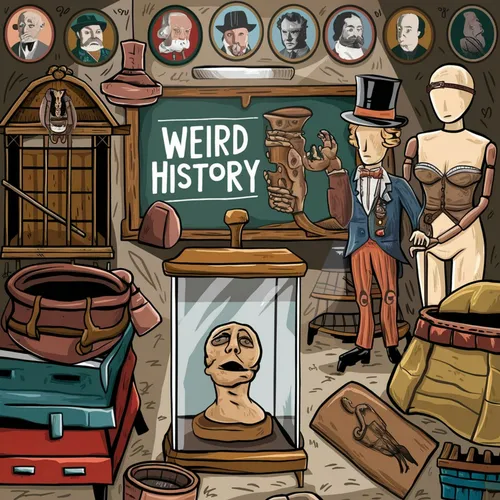The Creepy Victorian Tradition of Posing Dead Bodies for Family Photos - And Why Everyone Did It
- Author
- Dee Media
- Published
- Tue 16 Sep 2025
- Episode Link
- https://podcasters.spotify.com/pod/show/deemedia/episodes/The-Creepy-Victorian-Tradition-of-Posing-Dead-Bodies-for-Family-Photos---And-Why-Everyone-Did-It-e38ahuo
When Death Was Picture Perfect: The Disturbing World of Victorian Post-Mortem Photography
Imagine opening a family photo album and finding pictures of your deceased relatives posed as if they were still alive. For Victorians, this wasn't horror - it was love. Welcome to the bizarre world of post-mortem photography, where death became an art form and corpses were the star of family portraits.
In an era when photography was expensive and rare, many families' only professional portrait included their recently deceased loved ones. Photographers developed elaborate techniques to make the dead appear alive: propping bodies in chairs, painting eyes on closed eyelids, and even using hidden stands to keep corpses upright for the camera. Children were often photographed "sleeping" in their parents' arms, while adults were posed reading books or sitting at tables as if caught in a moment of life.
This episode of Weird History explores the surprisingly tender origins of this macabre practice. We'll uncover how high infant mortality rates, expensive photography, and Victorian attitudes toward death created a booming industry of memorial portraits. From traveling photographers who specialized in death scenes to elaborate studio setups that took hours to arrange, discover how an entire profession emerged around capturing final moments.
We'll examine the technical challenges photographers faced (rigor mortis, lighting, and time constraints), the emotional psychology behind these portraits, and how this practice influenced modern funeral customs. Plus, we'll reveal how to spot post-mortem photographs in antique collections and why some of these images are worth thousands of dollars today.
Warning: This episode contains descriptions and discussion of deceased individuals in photographs. Content may be disturbing to some listeners.
